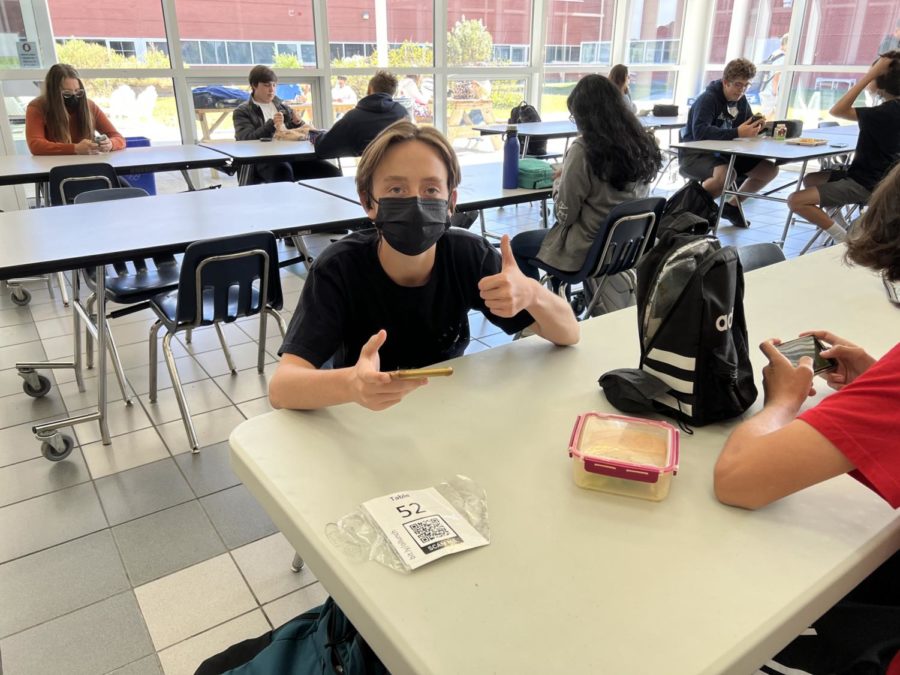Contact tracing provides new challenges for staff
Sophomore Caleb Tomberlein scans his table’s QR code during 5th lunch.
November 11, 2021
Due to COVID-19, VBCPS initiated the use of contact tracing measures during lunch. Placed on all lunchroom tables, contact tracing QR codes have been in effect since September.
If there aren’t enough students using them, it could lead to assigned seats; however, the majority of students have been using them.
According to school improvement specialist Dorothy Neal, students have assigned lunch seats, and “about 70% of students use QR codes.”
“If we don’t know who sat around you, then we will just have to go back to cameras and look at who sat around you, which is a bit tedious,” said Principal Clair Le Blanc.
Even though school code usage is over 70%, administrators want 100%. Getting the usage up to 100% will ease the amount of work administrators have to do if a student contracts COVID-19. Adding an incentive could get reluctant students to use the contact tracing.
“Students could get something from lunch after they use the QR codes a certain amount of times. I use it sometimes, and I don’t really have a reason to use them, there’s no consequence if you don’t use them,” said sophomore Caleb Tomberlain.
With the addition of incentives, students like Caleb may be more compelled to contact trace.
“We don’t have many current ways to improve QR code usage, but we’ll keep doing reminders, and we might ask for some student suggestions,” said Neal.

